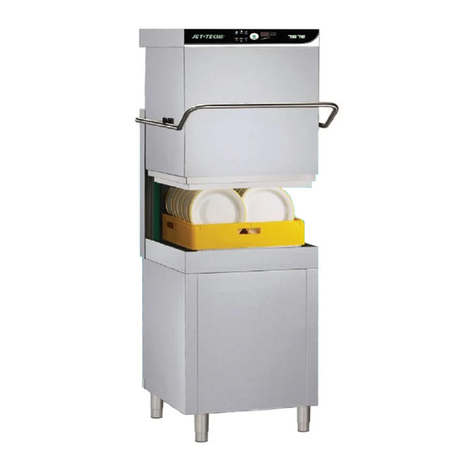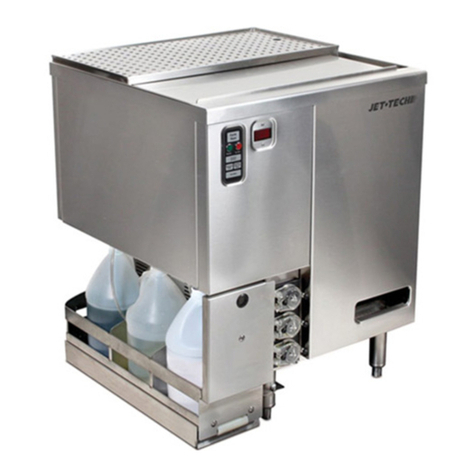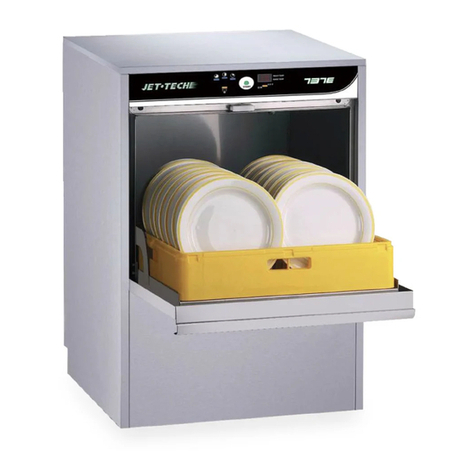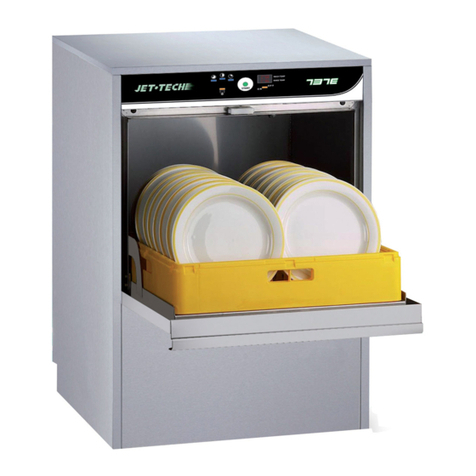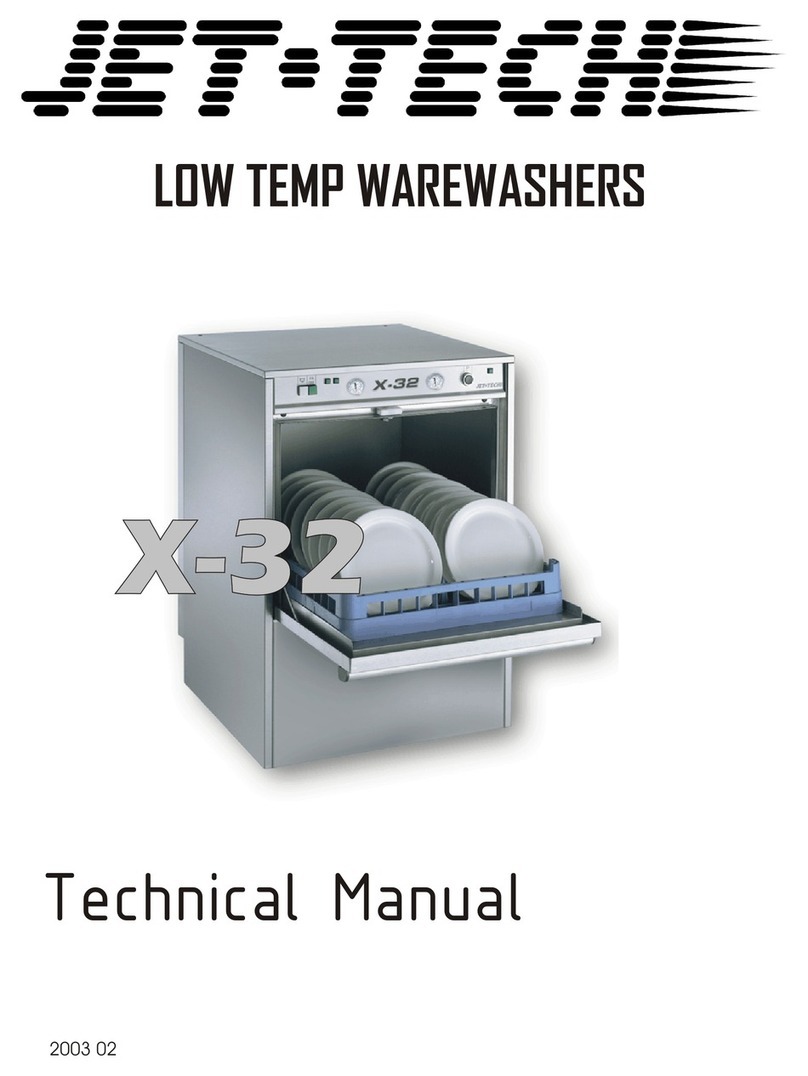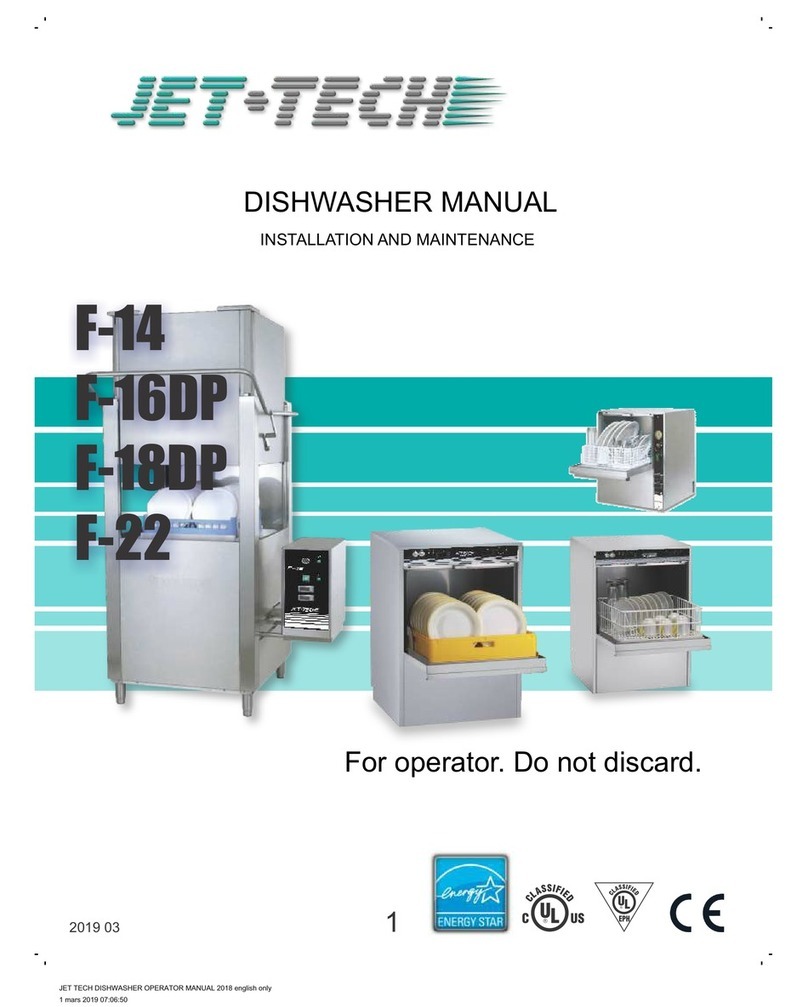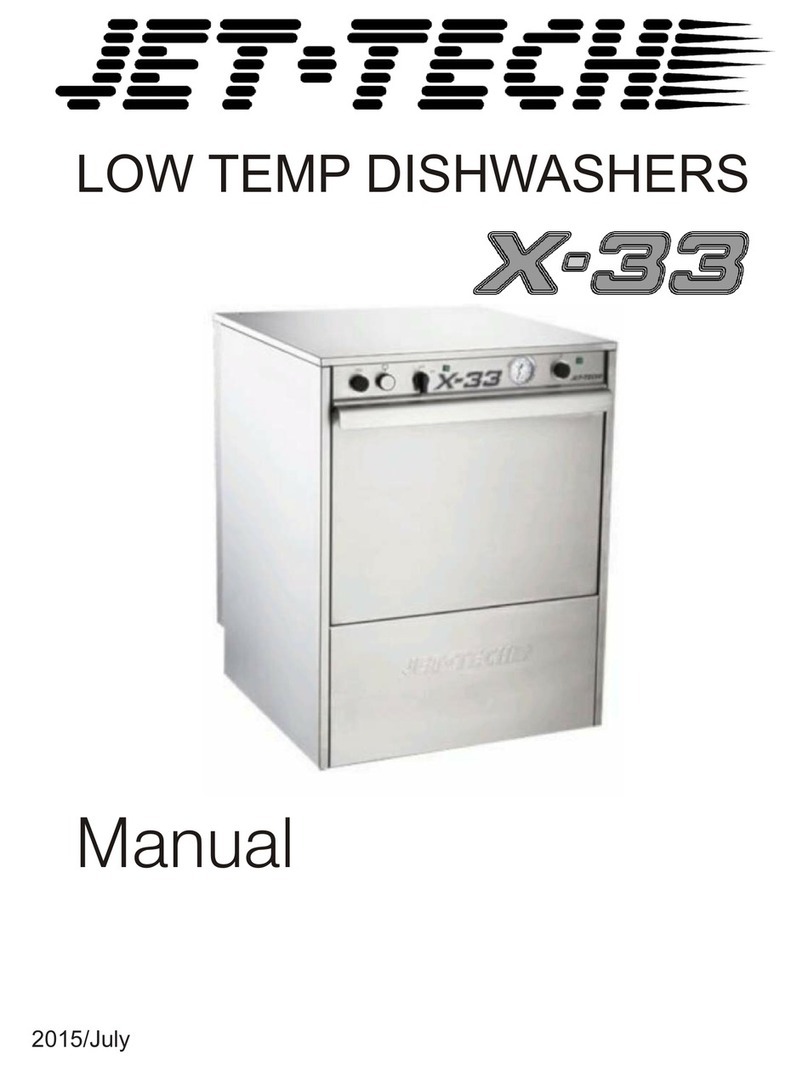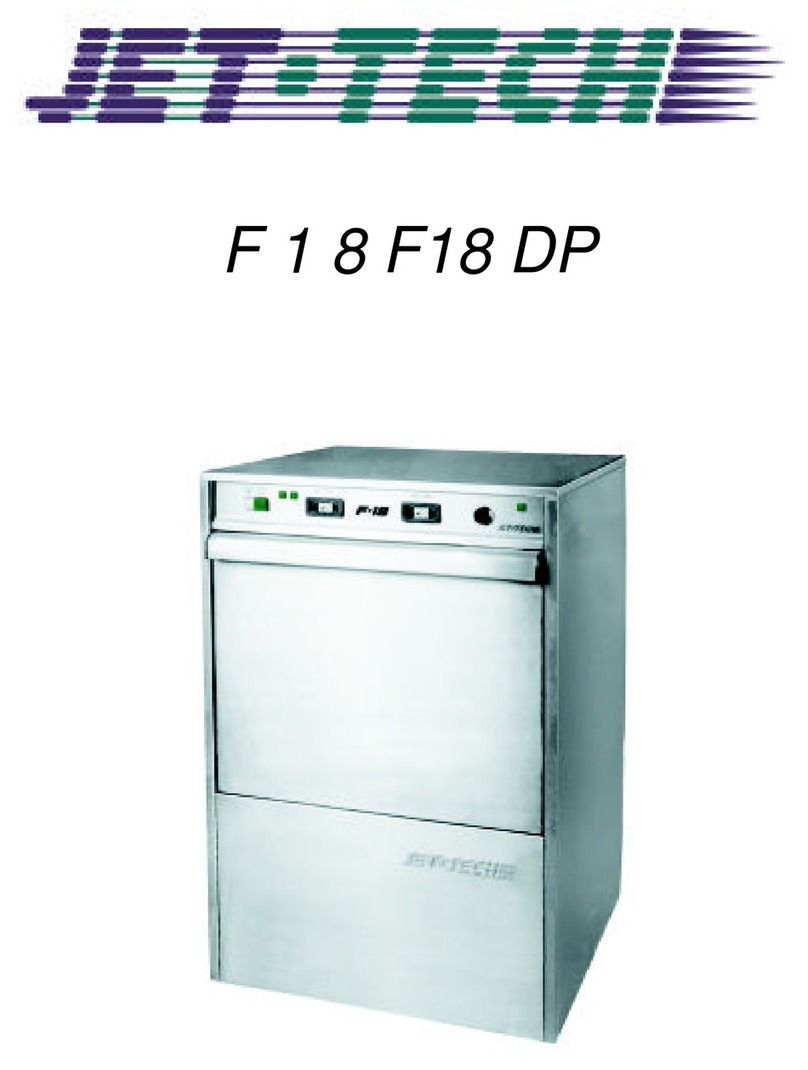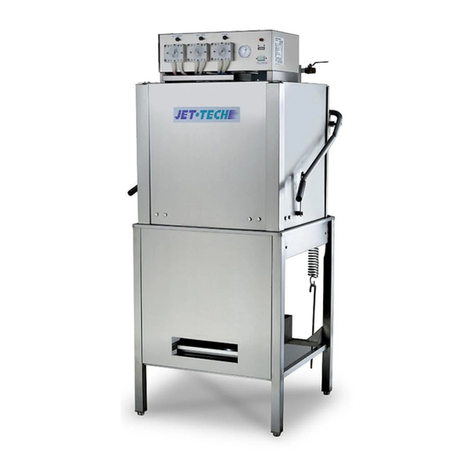
7
ATTENTION
Qualified tecnicians that install the
machine are obliged to train the operators
about machine utilization and safety
procedures to be followed. They must
provide a real “demonstration” and verify
that machine instructions are available to
the operators.
Following warnings should be noted:
The dishwasher must be installed in
accordance with local codes, or in the
absence of local codes, installed in
accordance with the applicable requirements
in the National Electrical Code, NFPA 70,
Canadian Electrical Code (CEC), Part 1, CSA
C22.1, and Standard for Ventilation Control
and Fire Protection of Commercial Cooking
Operations, NFPA 96.
WARNING!
DO NOT OPEN THE DOOR QUICKLY IF
CYCLE HAS NOT ENDED.
DO NOT DIP BARE HANDS IN WASHING
SOLUTION.
DO NOT TAKE OFF THE MACHINE PANELS
IF THE MACHINE HAS NOT BEEN
DISCONNECTED FROM THE POWER AND
WATER SUPPLY.
DO NOT BYPASS THE MACHINE
PROTECTIONS (MICROSWITCHES, PANELS,
OR OTHERS) PROVIDED BY THE MACHINE
MANUFACTURER IF NOT IN THE PRESENCE
OF TRAINED TECHNICIAN THAT CAN TAKE
PROPRER PRECAUTIONS.
DO NOT UTILISE THE MACHINE TO WASH
OBJECT OF SHAPE, TYPE, SIZE, AND
MATERIAL NOT COMPATIBLE WITH THE
MACHINE.
DO NOT OPERATE THE MACHINE IF NOT
PROPERLY CONNECTED, ACCORDING TO
THE SPECIFICATIONS AND REQUIREMENTS
OF THE LOCAL LAW AND PRESCRIPTION
OF MANUFACTURER, MAKING SURE THAT
ALL SAFETY DEVICES ARE OPERATIVE.
ID/RATING/DATA PLATE
ID/Rating plate of the appliance contains
identification and technical data and is
located on front panel.
2A – WATER CONNECTION
N.B.
Shut-off valve must be a single direction,
spool, sphere, lid control type, which can
shut water supply off quickly and totally.
The water pressure and flow must conform
to the data diagram supplied with each
machine.
1- Position the dishwasher and level the
appliance by turning the relative height-
adjustable feet. (Fig.4)
Fig. 4
2- Connect the solenoid valve, which feed the
machine, to the water shut valve, using a
flexible line. (Fig.5) Each machine must
have its own water supply line.
Fig. 5
2A1 – WATER SUPPLY PRESSURE
Check that dynamic water supply pressure,
measured between the appliance and the
main, is between 200 and 400kPa. If the
pressure is too high, fit a suitable pressure
reducer on the inlet pipe. If the pressure is
low, install an additional external pressure
motor pump. (par.1D – Technical Data)
-In case of new or long term appliance
inactivity, drain the water line to eliminate
air bubbles and foreign bodies present in
new or unused water lines, which could
damage the machine.
2A2 – WATER HARDNESS
If water hardness is higher than acceptable,
install a water softener of adequate size
before the feed solenoid valve. (par.1D –
Technical Data)
If there is a high concentration of mineral
residues in the water or high conductivity, we
recommend installing the demineralization
filter for 5/7° f.
INSTRUCTION FOR INSTALLER / MAINTENANCE
